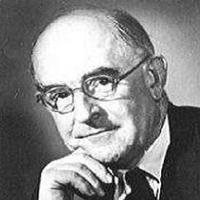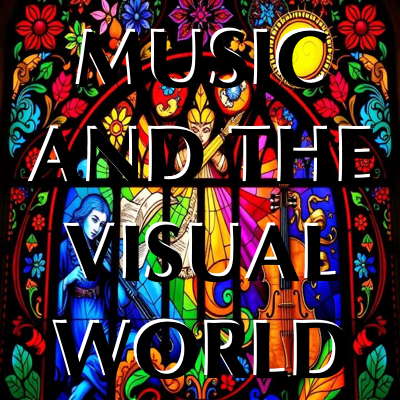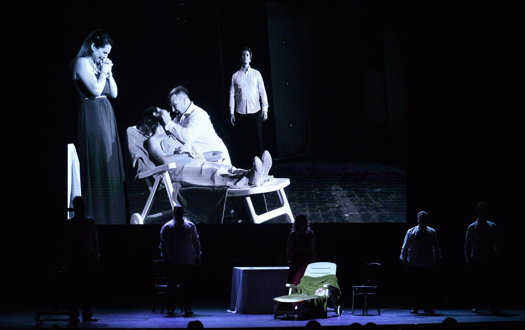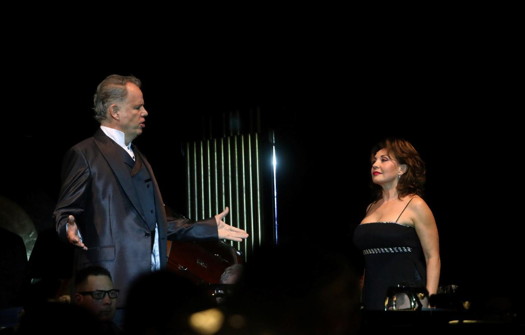 SPONSORED: Ensemble. Unjustly Neglected - In this specially extended feature, Armstrong Gibbs' re-discovered 'Passion according to St Luke' impresses Roderic Dunnett.
SPONSORED: Ensemble. Unjustly Neglected - In this specially extended feature, Armstrong Gibbs' re-discovered 'Passion according to St Luke' impresses Roderic Dunnett.
All sponsored features >>
- Sergei Cortez
- Sarasate
- Amoris Imprint
- Johann Christian Bach
- Howard Skempton: Orpheus with his Lute
- Prague Symphony Orchestra
- Jack's the Lad
- Adelaide
 DISCUSSION: John Dante Prevedini leads a discussion about Music and the Visual World, including contributions from Celia Craig, Halida Dinova and Yekaterina Lebedeva.
DISCUSSION: John Dante Prevedini leads a discussion about Music and the Visual World, including contributions from Celia Craig, Halida Dinova and Yekaterina Lebedeva.
Three Operas in Three Different Styles
ANETT FODOR reports from Miskolc on
La bohème, The Golden Dragon,
Duke Bluebeard's Castle and
a symphonic work by Scriabin
In the last few days I have attended three performances of the Bartók Plus Opera Festival in Miskolc, Hungary. The juxtaposition of Puccini's La bohème, Eötvös' Golden Dragon and Bartók's Duke's Bluebeard's Castle proved an interesting comparative experience with their differing musical styles.
Less is More
Giacomo Puccini's four-act opera La bohème was presented in three parts (with projected animation) on the outdoor Summer Stage of the Miskolc National Theatre, on 15 June 2019.
A ninety-minute animation was projected behind the singers. More than one hundred paintings illustrated the story on a huge screen. I found this both invasive and superfluous. These sometimes kitsch presentations distracted from rather than added to the music itself. It was very difficult to listen and watch at the same time. Music should speak for itself, and sometimes less is more.
Two singers - István Horváth (Rodolfo) and Zsolt Haja (Marcello) - really stood out from the others throughout the whole performance.

A scene from Puccini's La bohème at the Bartók Plus Opera Festival in Miskolc, Hungary. Photo © 2019 Vera Éder
The Speaking Orchestra
Péter Eötvös' one-act opera The Golden Dragon was first performed in Hungary in the Miskolc National Theatre on 16 June this year; its world premiere took place in Frankfurt am Main on 29 June 2014. The libretto was written by the composer.
It is based upon Roland Schimmelpfenning's play of the same name. Five excellent artists - Andrew Mackenzie-Wicks, Einat Aronstein, Andrea Meláth, Kornél Mikecz and Daniel Norman featured in the work. Their considerable technical skills and remarkable portrayal of the grotesque, the tragicomic and the surreal really captivated the audience's attention throughout.
The opera tells the story of a Chinese boy who goes to Germany to find his sister. He works in a Chinese-Thai-Vietnamese restaurant. A huge carpet, with a golden dragon emblazoned upon it, hangs on the wall. The boy likes to gaze at it. One day he develops agonizing toothache. As he has no health isnurance, he cannot go to the dentist. One of the cooks pulls out his tooth with pliers, but, due to lack of medical assistance, the boy bleeds to death. They roll up his body in the carpet and throw it into the river. His corpse returns to his homeland through rivers, seas and oceans.
There are even more strands to the plot, which, initially, make it rather hard to follow. However, by the end of the opera one realises how these interweave. Interestingly, each of the five singers interpreted several roles. The set was simple; a long white kitchen table stood in the middle of the stage. To the left, there was a screen. Behind it, the artists could quickly change costumes as they changed roles.
Zsolt Nagy conducted the Israel Conteporary Players. It must have been a long process for these excellent musicians to prepare this meticulously-composed, contemporary work. In some places they were prevailed upon to speak in unison, saying, 'Short pause' or 'Long pause' as required. I found this perplexing because I couldn't work out what it achieved - I wonder if they could? It struck me as grotesque - but perhaps that was the intention?
The Golden Dragon was directed by Bruno Berger-Gorski and its Artistic Director was Dan Yuhas.

A scene from Péter Eötvös' The Golden Dragon in Miskolc. Photo © 2019 János Vajda
A Fire and Seven Secret Doors
On 19 June Aleksandr Scriabin's Prometheus: The Poem Of Fire and Béla Bartók's Duke Bluebeard's Castle were performed on the outdoor Summer Stage of the Miskolc National Theatre.
The infrequently performed Prometheus is a symphonic work for piano, orchestra, optional choir and clavier à lumières or 'Chromola'. This latter is a colour organ, which was invented by Preston Millar. As you can imagine, even in Scriabin's lifetime, this rarity seldom featured in performances of the piece.

Scriabin's Prometheus: The Poem of Fire in Miskolc. Photo © 2019 János Vajda
Scriabin was a synaesthete and his synaesthesia and its associated colours influenced his work. To him, every harmonic note of his atonal scale appeared as a different colour. His colour-coded Circle of Fifths is another example of how this Russian Symbolist composer saw his subject matter. The pianist Dávid Báll and the excellent Hungarian National Philharmonic Orchestra cleverly combined the music with spectacular coloured lighting as their 'clavier à lumières'. The whole became not only a wonderful musical experience, but a splendid sight, as well.

Bartók's Duke Bluebeard's Castle in Miskolc. Photo © 2019 János Vajda
Béla Bartók's one-act opera Duke Bluebeard's Castle was performed by two world-renowned Hungarian artists; Andrea Rost (Judith) and András Palerdi (Bluebeard). Their performance enchanted the audience. The singers did not wear costumes and the set was a simple, giant backdrop of an ancient grey castle.
Their singing was really impressive, Béla Balázs' libretto was splendidly succinct and the Hungarian National Philharmonic Orchestra's playing, truly excellent. The musical tension between the soloists was both exciting and palpable!
Copyright © 22 June 2019
Anett Fodor,
Miskolc, Hungary

FURTHER READING:


